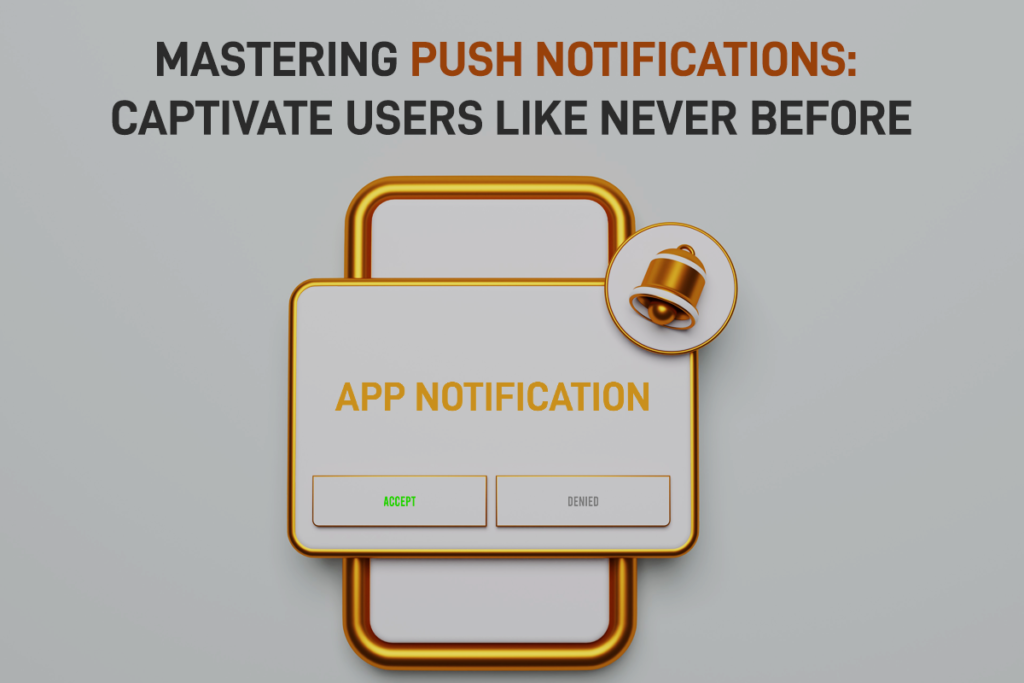
Implementing Push Notifications in Your Mobile App: Dos and Don’ts
Introduction
In today’s competitive mobile app landscape, implementing push notifications can significantly impact user engagement and retention. However, it’s crucial to understand the best practices and avoid potential pitfalls to ensure a successful push notification strategy. This article will guide app developers and business owners through the dos and don’ts of implementing notifications in their mobile apps, providing valuable insights for maximizing user engagement and app growth.
I. The Dos of Implementing Push Notifications:
a. Understanding User Preferences:
- Begin by gaining a deep understanding of your app’s target audience and their preferences. Conduct user research and analyze behavioral data to determine when and how users prefer to receive notifications.
- Segment your user base based on preferences and interests to deliver personalized and relevant notifications, enhancing user experience and engagement.
b. Crafting Compelling and Actionable Messages:
- Keep notifications concise, clear, and action-oriented. Use persuasive language and compelling offers to entice users to engage with your app.
- Implement urgency and scarcity techniques judiciously to create a sense of importance and prompt users to take immediate action.
c. Timing and Frequency:
- Time your push notifications strategically to avoid interrupting users during inconvenient moments. Consider time zones, user activity patterns, and local preferences.
- Maintain an optimal frequency of push notifications to prevent overwhelming users. Respect user privacy and avoid bombarding them with excessive notifications.
d. Personalization and Dynamic Content:
- Leverage user data to personalize push notifications. Incorporate user names, past interactions, or relevant contextual information to create a personalized touch.
- Utilize dynamic content to provide real-time updates, such as personalized recommendations, location-based offers, or in-app progress updates, increasing user engagement.
II. The Dos of Implementing Push Notifications:
a. Overwhelming Users:
- Avoid sending too many push notifications in a short period. Respect user attention and only send notifications that provide genuine value.
- Minimize redundancy and avoid duplicating notifications across multiple channels to prevent user fatigue and annoyance.
b. Irrelevant and Spammy Notifications:
- Refrain from sending generic or irrelevant push notifications. Tailor the messages to match user preferences and behavior.
- Avoid spammy practices, such as click-baiting, misleading content, or excessive use of promotional language, as it may harm your app’s reputation.
c. Neglecting Opt-In and Opt-Out Mechanisms:
- Implement clear opt-in and opt-out mechanisms to respect user preferences and privacy. Allow users to easily manage their notification settings within the app.
- Regularly remind users about their notification settings and provide options to update preferences, ensuring a positive user experience.
d. Lack of Testing and Optimization:
- Don’t neglect the importance of A/B testing and optimization. Test different variations of push notifications to measure their impact on user engagement and conversion rates.
- Analyze data and user feedback to iterate and improve your push notification strategy over time, maximizing its effectiveness.
Conclusion
Implementing push notifications in your mobile app can be a powerful tool for driving user engagement and retention. By following the dos and avoiding the don’ts outlined in this article, app developers and business owners can create a successful push notification strategy that adds value to users’ app experiences. Remember to continuously analyze user behavior, optimize your notifications, and adapt to changing user preferences to ensure the long-term success of your app and business.
Please feel free to Contact Us in case you need any guidance regarding your app marketing needs.




0